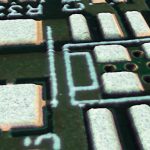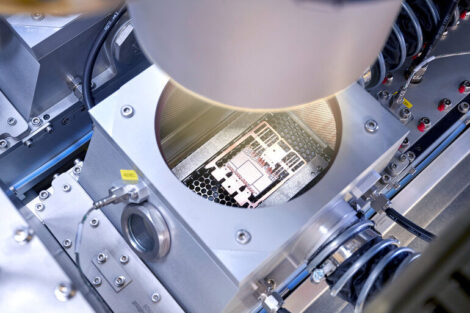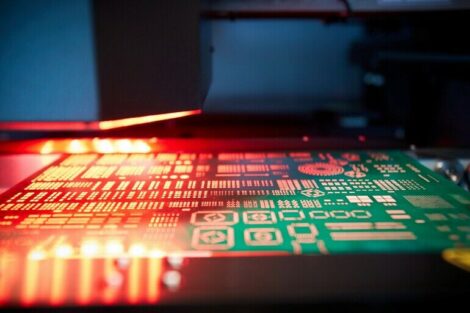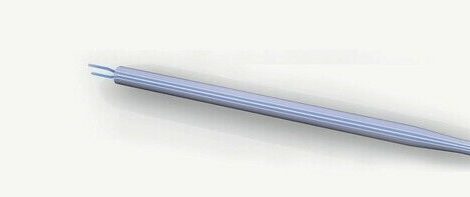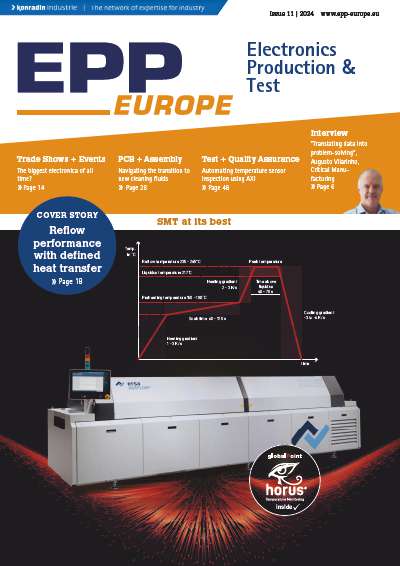Vi Technology was founded in 1993, at the heart of the French Silicon Valley in Grenoble. The company is solely dedicated to one business: automated optical inspection systems for the SMT industry. They are proud to serve among the most demanding and market leading customers in the world spanning 35 countries across all electronics sectors including automotive, industrial, medical, aerospace, consumer, computer and telecom. 2013 will be a special year for Vi Technology as celebrating the 20th year anniversary and will also launch in June, the most exciting product in the history of the company. This is the result of a 20 Mio. Euro investment and 150 man-year of research. The company is a technology company, labeled “Innovative” by the French government, and a member of Minalogic, a global competitive cluster for research-led innovation in intelligent miniaturized products and solutions for industry. The company has forged strong partnerships with leading French Research Institutes in optics, mathematics and computer sciences and we invests 4 to 5 Mio. Euro annually in R&D. We talked with François Amblard, the CEO of the company about the future.
Mr. Amblard, why invest so much in R&D?
Summing-up our Customers’ expectations for inspection systems is straight-forward:
1. Simple and fast programming, with program quality independent of programmers’ skills and transportability between systems without modification 2. Detection of the full range of defects with no false calls 3. Capability to display clear images at review for operators to efficiently classify 4. Software to drive the process and transform data into useful information that we call actionable data 5. And finally a reliable, accurate, repeatable and fast metrology system Having said this, the diverse characteristics of PCBs and assembly processes, the wide range of physical dimensions of components combined with their ever shrinking size, make satisfying these Customers’ expectations challenging in many technical areas. To meet these challenges, we assembled and developed an R&D team composed of 50 PhDs and engineers coming from very eclectic backgrounds and experiences (from applied research to the gaming industry) across numerous engineering disciplines: optics, mathematics, mechatronics, mechanics, high speed electronics, industrial design and four different computer sciences expertise from user interface to GPU programming. The team’s shared passion for performance, simplicity and quality, spurred our most recent innovation, a true breakthrough technology, for which we have filed 10 new patents. Our location at the heart of the French Silicon Valley offers a unique opportunity to attract highly qualified Engineers and benefit from the local technological environment and expertise. As an illustration, before joining our team, our camera and optics designers were working nearby for the No 2 player in the world for high-end high-speed cameras. At Vi Technology, they designed a 160 Megapixel inspection head with a data transfer rate of 30 Gigabits per second to make a simple to use high performance inspection system. This inspection head is manufactured in our clean room in France. We are also very fortunate to be part of a family-owned industrial company that strongly believes that long term investment in innovation is essential to lead in technology driven markets and technology is a means to bringing solutions to customers and not an end.
Now we want to talk a bit about the outlook on the industry. Will automated inspection continue to grow?
Vi Technology is dedicated exclusively to automated optical inspection for the SMT industry. This market offers significant growth potential. A decade ago, automated inspection was an option chosen by a few large multinationals to improve process control and gating outgoing quality. Today, it has become both a process and an end-customer requirement driven by traceability imperatives and the need for defect prevention. In fact, we see a growing number of customers inspecting at multiple steps in the process. This trend will continue to be more prevalent in the future placing growing emphasis on linking the inspection data collected at the various steps to provide useful process improvement information. We serve all segments of SMT production from automotive, industrial, medical, aerospace sectors generally in Europe and North America, mobile, consumer, computer and telecom infrastructure mainly in Asia and other regions. These segments are clearly different in terms of product mix, volume per batch, and technical criteria but also in terms of business cycle.
What is the current business climate?
We expect 2013 to unfold similarly to 2012 with continued growth in certain geographic regions particularly in China and South America and certain applications such as consumer products while in other regions, particularly in Western Europe, we anticipate persistence of a wait-and-see climate. We may also witness North America becoming stronger thanks in part to the growing inshoring trend (reversal of outsourcing).
What about your vision of inspection in the future? How do you see the inspection segment evolving?
Our market is relatively small with roughly 600 Mio. Euro per year worldwide for automated optical inspection systems which represents 5 to 10% of total SMT line capital expenditure. Although a few players have been acquired by companies outside the inspection field, there has been no merger & acquisition (M&A) activity within the inspection players. For several reasons, mainly technology, distribution, and customer referencing (AVLs), we believe such M&A activity would not generate any value today. At present, we could easily enumerate 20 players. This is a significant number which we believe will decrease in the future. We are at the cusp of a new beginning for inspection and a trend towards bipolarization of the market is starting with technical solution providers on the one hand and entry level solutions on the other. In order to deliver simple, high performance and cost effective inspection, strong technical barriers are emerging requiring players to master skills such as parallel computing, high speed electronics, state-of-the art algorithms, camera and optics design as well as computer science capabilities combined with strong industrial design and manufacturing. Capacity of inspection players to invest heavily in these disciplines will determine their ability to meet the inspection challenges of the future and satisfy customers’ growing need for inspection.
Mr. Amblard, Thank you for your time.
3D Selective, a-custo-mer testimonial:
3D Selective solution has been introduced by Vi Technology in mass production at various SMT manufacturers around the world. Endress & Hauser successfully introduced 3D Selective option, as a retrofit on their existing system, with no impact on inspection time. Ludovic Adam, SMT process engineer, explains his choice to Vi Technology:.
Can you explain why you choose to introduce 3D Selective?
Sometimes when assembling small components such as 0201 or 01005 chips and BGA’s on the same PCB, a chip may be dropped by the chip shooter nozzle. In some cases this defect cannot be detected, even with functional or ICT tests. The only way to detect this defect is to measure the height of the component.
What about XRAY AOI to detect this defect?
AXI machine can help to spot this defect, but the time spent per PCB is far too long. We conducted a statistical study comparing the defect occurrence, the time spent to find it and the associated cost of an AXI. As this defect does not happen often but beeing a highly critical one, the associated costs using AXI were not justified, so we decided to introduce inline 3D Selective to measure height of the BGAs.
What are the benefits of using 3D Selective?
We measured that there was a direct link between solder quality and BGA height. Thanks to this option we reduced inspection time for BGA’s and increased our test coverage as height measurement is the best way to check for something not normal under a BGA. If the component height and tilt angle is out of range, it means that something has gone wrong during the assembly or the reflow.
Zusammenfassung
Die Titelstory ist ein Interview mit François Amblard, dem CEO von Vi Technology über das Unternehmen, einem allgemeinen Ausblick sowie zur Zukunft der Inspektionstechnologie. Zudem feiert das Unternehmen sein 20igstes Bestehen und wird dazu ein spannendes, neues Produkt präsentieren.
L’historique du titre est une interview de François Amblard, CEO de Vi Technology, sur l’entreprise avec une perspective générale mais aussi sur l’avenir de la technologie de l’inspection. De plus, l’entreprise fête ses vingt ans d’existence et présentera également un produit nouveau passionnant.
Share:






